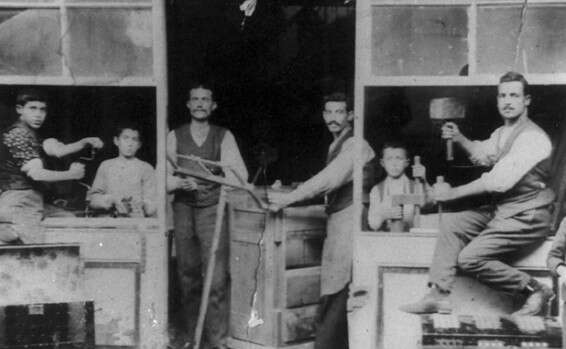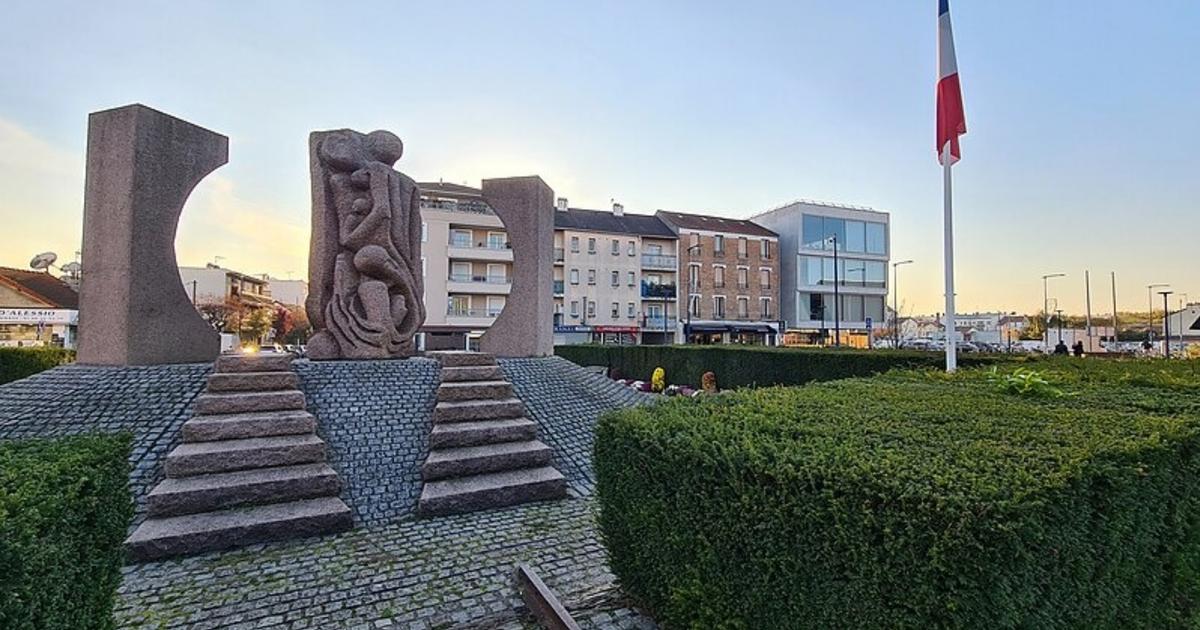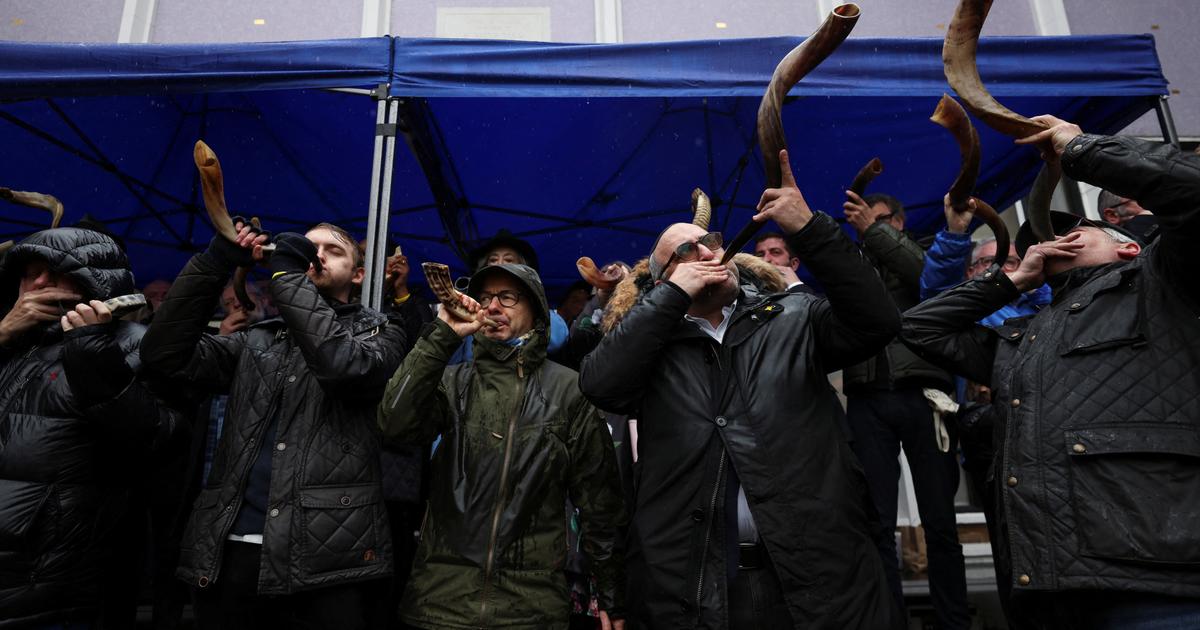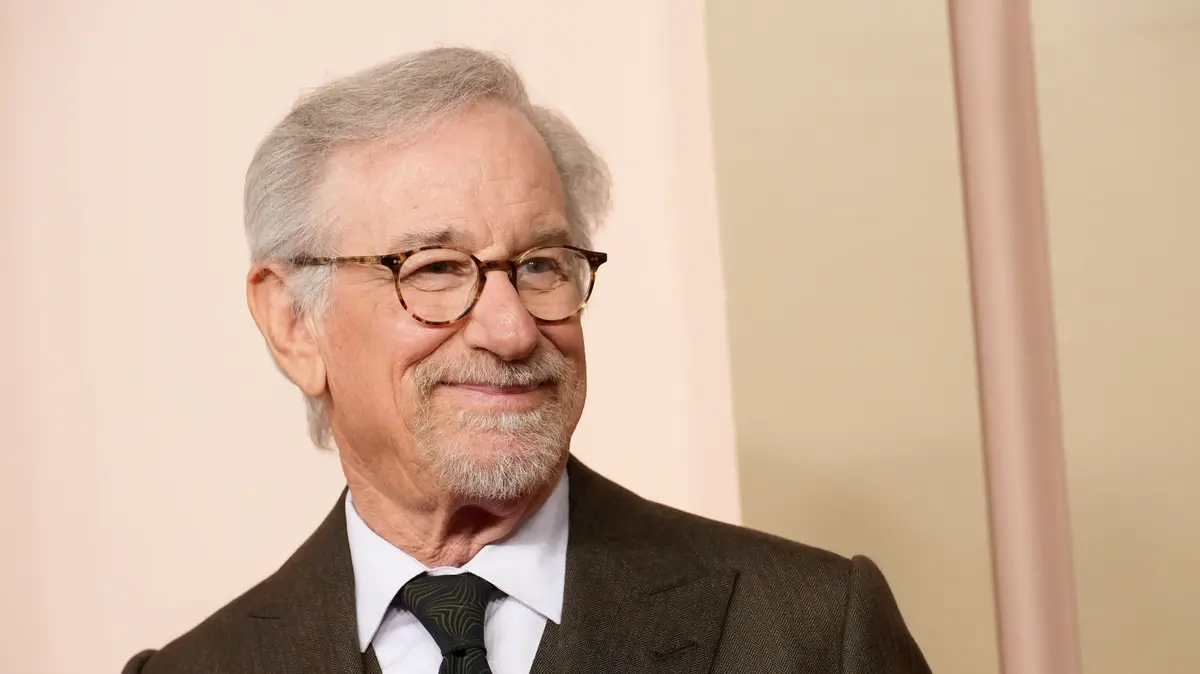The Waqf is nowhere to appear in Israeli courts, and is careful not to employ Jews and Israeli companies in the Temple Mount complex. But a new study by Dr. Dotan Goren documents other periods in which Jewish artists renovated al-Aqsa and the Dome of the Rock, as well as the mosque in the Patriarchs Cave.
Help to remove the highlight of the Dome of the Rock. Students in carpentry school
Photography:
From Wikipedia
In April 1994, Jordan marked the completion of the Dome of the Dome renovation work on three days of holiday and in a passionate speech to the tears of King Jordan, Hussein. The project was made possible only after the Jordanian ruler sold his magnificent private estate near London to the ruler of Oman, the Sultan Qabus al-Said. The donation, about $ 10 million, he donated to the Dome of the Rock Dome cladding, new gilded and waterproof panels.
But behind the scenes of the royal donation and the overhaul of the dome there was a mini-drama, which was typical of the ambivalence of the Muslim religious establishment in Jerusalem in relation to economic relations with Jews and Israeli companies. The Waqf, it turned out, initially preferred to hire the services of an Israeli company with experience in the field, and to undertake the task of cladding and renovating the Golden Dome. But when it became clear that the company was employing Jews in jobs, Waqf delayed them and offered the company to sell its special sealing materials to an Arab trader who would employ Arab workers.
The Dome of the Rock // Photo: Oren Ben Hakon
Israeli society refused. She conditioned the job responsibilities by having her people oversee the jobs, but the Waqf rejected this demand outright. The Jerusalem Mufti relinquished contact with the company and hired the services of two companies, Italian and British, who renovated the Dome of the Rock and the Dome of Al-Aqsa.
The Waqf's insistence on avoiding the employment of Jewish workers in the Temple Mount complex and its mosques is not surprising. She is well-known for situations and similar events during Israel's reign in Jerusalem. It is precisely because of this that there is a special interest in research currently published by Dr. Dotan Goren, a member of Bar-Ilan University. Goren has documented the employment of Jewish craftsmen by the Waqf in the Temple Mount mosques in the second half of the 19th and early 20th centuries. According to past precedents, it turns out, the current Muslim ban on employing Jews on the mountain is not religious, but political.
At the Aharon Grabelski workshop in Rehavia // Photo: Courtesy of the Grableski family
As early as the 1970s, Joseph Krieger, a Jewish construction engineer, oversaw renovation work done on the Temple Mount under the direct instruction of Sultan Abdul Aziz. Two years later, the newspaper "The Lily" reported on "a pure gold-plated crystal lamp ... seventy nests for it ... two Jewish artisans from Warsaw sent to stand on a machine." The lamp, "Gift of the Sultan to the Jaffa port in ten large boxes and loaded with ten camels," on her way to Jerusalem.
Inspiration for Shai Agnon
Not only Jewish artisans from abroad were admitted to the Muslim "Holy of Holies", the former sanctuary. Goren found testimony from the Jerusalem educator David Yellin, who says that prior to the arrival of German Emperor Wilhelm II in Israel, the students of the school were enlisted (all Israel members). To repair and remove the highlight of the Dome of the Rock in the workshop of their school. The school's students had prior experience in the field, since two years earlier they had been involved in installing gates, lanes, stairs and balustrades in the mosque in the Patriarchs' Cave in Hebron. Jews were not allowed in those days to pray and pray in the cave, and they could only reach the seventh level up the compound. However, this did not stop Muslims from using the services of Kihan students, whose name came out as excellent deaf and iron craftsmen.
In the early 20th century, Jewish artisans from Bezalel also began to integrate into art work and maintain the mosques on the Temple Mount. Following an avalanche on the mountain, the decorations of the al-Aqsa Mosque and the Dome of the Rock were severely damaged. Greek artisans who were called to Jerusalem failed in their work, and the Muslims turned to painter Samuel Melnik, a graduate of the Academy of Painting and Art in Warsaw and Vienna, who studied at Bezalel as a painter, artist and designer.
Cave of the Patriarchs // Photo: Tzahi Miriam
Melnick himself testified to the extraordinary experience he went through and wrote: "In 1915, I decorated the exa building in the courtyard of the temple. I also repaired the marble pillar cracks in the Omer Mosque itself. This work took three months, and with my help came the paint Mr. Moshe Levy ".
Goren notes in his research that later, Melnick's occupation inspired the writer SJ Agnon, in the design of Yitzhak Komar's character, in the famous novel "Transcript of the Day":
"And when they had to repair their temple on the Temple Mount, and asked to bring colors from Egypt," said Pasha, Rini sent you a Jewish fellow of all Egyptian artisans against a camel, and sent them to our friend Isaac ... who went in front and did a craft instead of our temple, which other artisans in Jerusalem fear Get in there because we are dead unclean and don't have red cow ash. "
The person involved at the time in coordinating the artwork in the mountain mosques was Nahum Vaybut, who was appointed by the Turkish naval minister, Ahmed Jamal Pasha, to improve the interior of Jerusalem and later to the city engineer. Goren found in the Central Zionist archive a writing and description of how he scraped the "plaster from the interior walls of the al-Aqsa Mosque," with the help of a group of Bezalel students who understood art, scrubbed the plaster carefully from the walls and columns in their mockery of ancient art, and discovered the ancient building. .
He added, "Bezalel students (plasterers) removed the plaster from the gates that stood on the steps leading to the rock paw. In the rock paw building," he clarified, "I did not touch. Only repaired the wrecked roof because the lead was broken and I did so at the mosque's request."
Advertisement by the painter Samuel Melnick // Photo: From the study courtesy of Shai Prakash
Goren emphasizes that the people of the "Old Yishuv" in Jerusalem, who were Orthodox Jews, refrained from working in the Temple Mount because of the halachic prohibition that prevented them from entering the temple, and that the Jewish craftsmen who entered the mountain were among the new Yishuv in the city, who were mostly educated and secular people. "Working at Mount has strengthened their professional reputation," says Goren.
However, the Muslim religious establishment did not differentiate between the Jews of the old, mostly ultra-Orthodox, and the Jews of the new settlement; When the establishment wanted a Jewish craftsman, he knew how to insist. At the beginning of the 20th century, he felt this about his flesh, Rabbi Moshe Shapiro, whose expertise in installing sun clocks in the Jewish neighborhoods of Jerusalem was there for nothing. The Waqf asked Shapira to install a sunblock near the Dome of the Rock to accurately determine the Muslim prayer times on the spot. Being a religious Jew, Shapiro refused to go to the Temple Mount for halachic reasons and evaded various excuses.
Goren says that the Muslim endowment superintendent, Sheikh Nimar Efendi, tried to seduce Shapiro in every way and possible amount, and even told him that it would contribute to bringing believers from both religions together. Effendi tried to work with Rabbi Yosef Chaim Sonnenfeld, the rabbi of the ultra-Orthodox community in Jerusalem, but this completely backed the watchmaker's decision not to enter the temple.
The rumor of the reluctant watchmaker has made wings in the Muslim population of the city, which has refused to be an insult to their religion. In the advice of Sheikh Nimer, Shapiro relocated his residence to develop hope until a rage passed. The Elijah Shlomo Zalman Basin locksmith also refused the same reason for repairing a grate on the Temple Mount, despite repeated entreaties and high sums offered to him.
Build the Mufti residence
The naturalism with which the Muslims approached Jewish craftsmen, and the backing that the Ottoman authorities gave in that regard, were also embodied in those two models of the Temple Mount, designed by architect Konrad Schick: one of the Temple Mount where the Temple was "planted", and the other of the Mountain at that time Temple Mount mosques.
Both models were presented at the Ottoman Pavilion at the Vienna International Fair in 1873. Today, of course, it is hard to imagine Turkey's ruler Erdogan, who sees himself as the successor of the Ottoman Empire, sponsoring the display of two such models side by side, but in those days it was possible.
Albert Antebi // Photo: From Wikipedia
Jewish artisans were also employed in the Cave of the Patriarchs, and Goren's research also deals with them. Jews, for example, designed the pipe that led water to the Cave of the Patriarchs, and Albert Antebi, the deputy principal of the Khach School (already mentioned here on the Temple Mount), oversaw "the work of the iron train in the Patriarch's Cave, to the satisfaction of the Waqf administration" (The Zvi newspaper, 26.9.1897).
Another Jewish artist who recruited his talents in favor of marble crafts and stone repairs on mosaic walls in the Patriarchs Cave was Aaron Gerblansky - a partner in building apartments and public buildings throughout Jerusalem. In the late 1920s, business connections were established between Gerblansky and the Jerusalem Mufti, Hajj Amin al-Husseini, and he worked on building the Mufti residence in the Sheikh Jarrah neighborhood. In the mid-1930s, the Waqf administration - probably mediated by the Mufti - suggested to him to go to Hebron and make the stone repairs in the mosaic walls of the Patriarchs Cave.
Five years after the 1910 massacre and murder of the 67 Jews in Hebron, Gerbalski therefore traveled to Hebron, carried out measurements on the site, took with him stone samples and ordered a unique marble from Belgium to match the ancient marble tiles in the cave mosque.
"Gerblansky was supposed to do another job for the Muslim Waqf to repair the Dome of the Rock and the Al-Aqsa Mosque," Goren says. "However, this work did not come about because of the tension between the Jews and the Arabs, when the 1936-1939 events broke out, which sharpened economic relations between Parties. "
Today, the political and religious conflict around the mountain has taken over the agenda and discourse around it. The Waqf not only no longer employs Jewish craftsmen, but also makes little public appearances in Israeli courts, emphasizes that he does not recognize Israeli rule in Jerusalem and its authority on the Temple Mount, and recently also considered the possibility of opposing the cable car program, which is supposed to lead Jews to the Western Wall, on the grounds that it passes over I'll leave.









